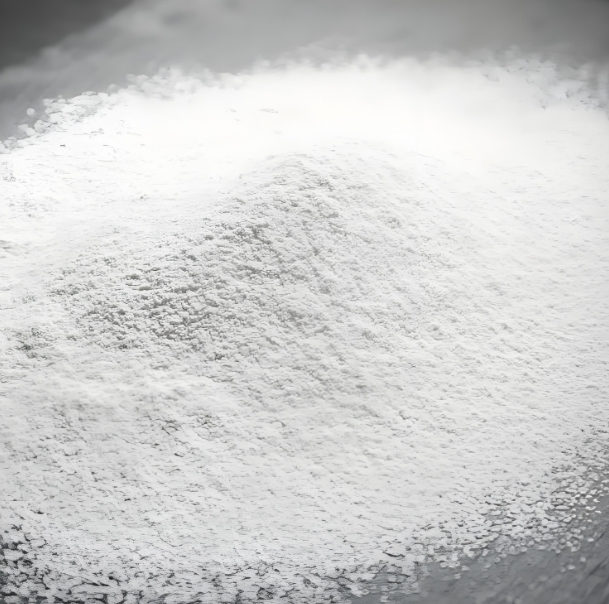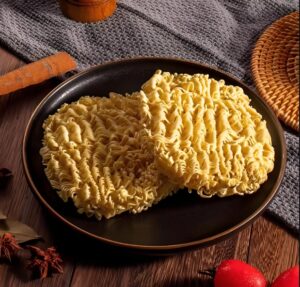<h1>Introduction to Modified Starch Production Lines</h1>Modified starch is a versatile ingredient derived from natural starches, altered through chemical, physical, or enzymatic processes to enhance its properties. In the B2B sector, production lines for modified starch play a crucial role in industries like food, pharmaceuticals, and textiles. This article explores the essentials of these production lines, offering insights for businesses seeking to optimize their manufacturing processes and expand in global trade markets.
modified starch making machine
ToggleWhat is Modified Starch and Why is it Important?
Modified starch refers to starch that has been treated to improve its functionality, such as stability, solubility, or texture. Unlike native starch, which comes directly from sources like corn, potato, or tapioca, modified versions withstand extreme conditions like high heat or acidity.
This modification is vital for B2B applications, where consistency and performance are key. For instance, in the food industry, modified starch acts as a thickener or stabilizer in products like sauces and baked goods, ensuring better shelf life and quality.
In foreign trade, demand for modified starch has surged due to its role in sustainable packaging and eco-friendly products. Businesses investing in efficient production lines can gain a competitive edge by meeting international standards and regulations.
The Components of a Modified Starch Production Line
A typical modified starch production line consists of several integrated components designed for seamless operation. These include raw material handling systems, modification reactors, drying units, and packaging stations, all automated for precision and efficiency.
Raw material handling begins with sourcing and preparing starches, which involves cleaning and grinding. This step ensures purity, reducing contamination risks that could affect the final product quality in B2B exports.
Modification reactors are the core of the line, where chemical agents or enzymes alter the starch’s molecular structure. Advanced lines use computer-controlled systems to monitor parameters like temperature and pH, minimizing waste and enhancing yield.
Key Equipment in the Production Process
Essential equipment includes mixers for blending starch with modifiers, extruders for physical modification, and centrifuges for separation. Each piece is engineered for durability, making it suitable for high-volume B2B operations.
Drying units, such as spray or flash dryers, remove moisture to prevent microbial growth, ensuring the starch meets global export standards. Finally, packaging systems automate bagging or bulk loading, streamlining logistics for international trade.
The Step-by-Step Production Process
The production process for modified starch involves several stages, starting with raw material selection and ending with quality assurance. Understanding this flow helps B2B professionals optimize their supply chains and reduce costs.
- Raw Material Preparation: Starches are sourced, cleaned, and milled to achieve uniform particle size, which is critical for consistent modification.
- Mixing and Dispersion: The starch is mixed with water and chemical agents in a controlled environment to initiate the modification reaction.
- Reaction Phase: This is where the actual modification occurs, using heat, pressure, or enzymes to alter the starch’s properties, tailored to specific industry needs like food or paper production.
- Neutralization and Washing: After reaction, the mixture is neutralized to stop the process and washed to remove excess chemicals, ensuring safety for end-users.
- Drying and Milling: The modified starch is dried to the desired moisture level and milled into fine powder, ready for packaging and distribution in global markets.
- Quality Control and Testing: Final products undergo rigorous testing for viscosity, gelatinization, and purity, complying with standards like ISO or FDA for B2B exports.
This structured process not only boosts efficiency but also supports scalability, allowing businesses to handle increased demand in foreign trade.
Types of Modified Starch and Their Applications
There are various types of modified starch, each designed for specific uses. For example, pregelatinized starch dissolves instantly in cold water, making it ideal for instant food products, while cross-linked starch offers resistance to shear, perfect for sauces.
In the pharmaceutical sector, modified starches serve as binders or disintegrants in tablets, enhancing drug delivery. B2B companies can leverage these types to cater to diverse markets, from Europe to Asia.
Other variants include oxidized starch for adhesives and cationic starch for paper manufacturing. Selecting the right type depends on the production line’s capabilities, influencing factors like cost and output quality.
Industry-Specific Applications
In food processing, modified starch improves texture in frozen foods and dairy products, extending shelf life and reducing waste. For textiles, it acts as a sizing agent, enhancing fabric strength during weaving.
The cosmetics industry uses it in formulations for its thickening properties, while in oil drilling, it stabilizes fluids. These applications highlight the versatility of modified starch, driving B2B innovation and trade opportunities.
Benefits of Investing in a Modern Modified Starch Production Line
Investing in a state-of-the-art production line offers numerous advantages for B2B enterprises. It enhances productivity by automating repetitive tasks, reducing labor costs, and minimizing errors in the modification process.
Energy efficiency is another key benefit, with modern lines incorporating eco-friendly technologies that lower carbon footprints. This aligns with global sustainability trends, appealing to environmentally conscious buyers in foreign markets.
Moreover, these lines improve product consistency, which is essential for maintaining brand reputation in international trade. Businesses can achieve faster turnaround times, enabling them to respond quickly to market demands.
- Cost Savings: Reduced waste and optimized resource use lead to lower operational expenses over time.
- Scalability: Lines can be expanded to handle larger volumes, supporting business growth in emerging markets.
- Compliance: Built-in features ensure adherence to global regulations, facilitating smoother exports.
- Innovation: Integration with AI and IoT allows for real-time monitoring, fostering continuous improvement.
Technological Advancements in Modified Starch Production
Recent advancements have revolutionized modified starch production lines, incorporating automation and digital controls. For instance, AI-driven systems predict maintenance needs, preventing downtime and ensuring uninterrupted B2B operations.
Energy-efficient reactors and eco-friendly modification methods, such as enzymatic processes, reduce environmental impact. These innovations help businesses meet stringent EU and US regulations, opening doors to new trade partnerships.
Furthermore, integration with Industry 4.0 technologies enables remote monitoring, allowing managers to oversee production from anywhere. This is particularly useful for multinational companies managing global supply chains.
Future Trends in the Industry
Looking ahead, the rise of bio-based modifications and sustainable sourcing will shape the future of production lines. B2B firms adopting these trends can differentiate themselves in a competitive market.
Emerging technologies like 3D printing for custom equipment and blockchain for supply chain transparency are set to enhance efficiency. These developments will likely increase demand for modified starch in sectors like renewable energy and biodegradable plastics.
Frequently Asked Questions
Below are common questions about modified starch production lines, answered to provide clarity for B2B professionals.
What is the typical cost of setting up a modified starch production line?
Costs vary based on scale and technology, ranging from $500,000 for small setups to several million for large-scale operations. Factors like automation level and energy efficiency influence the final price.
How does a modified starch production line ensure product safety?
Modern lines include automated quality control systems that test for contaminants and verify compliance with food safety standards, such as HACCP, to protect end-users.
What maintenance is required for these production lines?
Regular maintenance involves checking sensors and reactors every few months, with full overhauls recommended annually to maintain optimal performance and extend equipment life.
Can these lines be customized for specific starch types?
Yes, manufacturers offer customizable options, allowing businesses to tailor lines for starches like corn or wheat, based on their target markets and applications.
What are the energy requirements for a standard production line?
Energy needs depend on the line’s size, but efficient models use 20-50% less power than older systems, often incorporating renewable sources for sustainability.
Market Trends and Global Trade Opportunities
The global market for modified starch is expanding, driven by increasing demand in emerging economies. B2B companies can capitalize on this by exporting production lines or finished products to regions like Asia-Pacific and Latin America.
Trade agreements, such as those under the WTO, facilitate easier access to international markets. Businesses should focus on trends like organic modified starch, which is gaining popularity for its natural appeal.
Challenges like fluctuating raw material prices can be mitigated through strategic sourcing and advanced production technologies. Overall, the sector offers promising growth for exporters.
Conclusion
In summary, modified starch production lines are essential for businesses in the B2B foreign trade arena, offering efficiency, versatility, and innovation. By understanding the processes, benefits, and trends, companies can enhance their operations and seize global opportunities. Investing in these lines not only boosts productivity but also supports sustainable practices, ensuring long-term success in a dynamic market.









